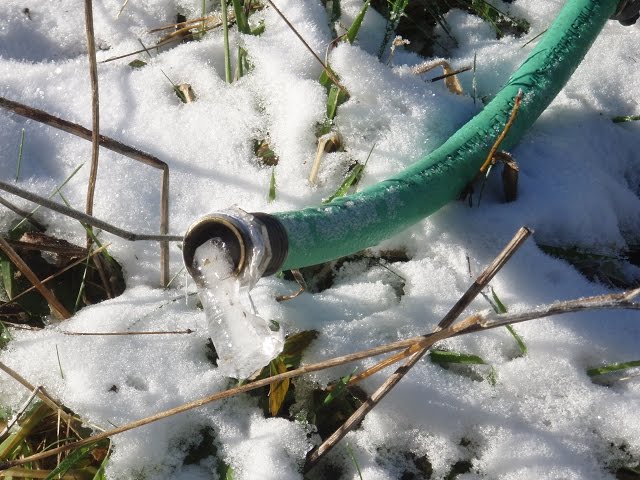Introduction
Winter’s chill can cause garden hoses to freeze, leading to cracks and damage if not handled properly. Unfreezing a garden hose quickly and safely is essential to maintain its longevity and ensure your garden stays hydrated when temperatures rise. This article covers expert methods to unfreeze garden hoses, prevent damage, and offers practical tips for winterizing your garden setup.
Why Garden Hoses Freeze and Why It Matters
Garden hoses freeze when water inside them turns to ice due to low temperatures. Frozen water expands, potentially causing the hose to crack or burst. This damage not only wastes water but also results in costly replacements. Understanding this process underscores the importance of proper thawing techniques and preventative measures.
The Risks of Improperly Thawing a Frozen Hose
- Using excessive heat sources like open flames can melt or damage the hose material.
- Sudden pressure changes can cause pipe or faucet damage.
- Ignoring frozen hoses can lead to leaks and water wastage.
How to Safely Unfreeze a Garden Hose
Step 1: Disconnect the Hose
Always start by detaching the hose from the outdoor faucet. This prevents water from backing up into your home’s plumbing system, which could freeze and cause further damage.
Step 2: Bring the Hose Indoors or to a Warmer Area
If possible, move the hose to a warmer environment such as a garage or basement. Gradual warming reduces stress on the hose material and prevents cracking.
Step 3: Use Warm Water
Gently run warm (not hot) water over the frozen sections. Alternatively, submerge the hose in a tub of warm water to allow even thawing. Avoid using boiling water as it can damage the hose.
Step 4: Apply Indirect Heat
In cases where moving the hose indoors isn’t feasible, wrap the hose with towels soaked in warm water or use a hairdryer on a low heat setting. Maintain a safe distance to prevent overheating.
Step 5: Check for Damage
Once thawed, inspect the hose for cracks or leaks. Test the hose by running water through it at low pressure before reconnecting it to the outdoor faucet.
Preventing Garden Hose Freezing in the Future
Proper Storage Techniques
- Drain hoses completely before storing them for winter.
- Store hoses indoors or in insulated sheds.
- Use hose reels to keep hoses off the ground and reduce exposure.
Use of Insulation Materials
Wrapping hoses and outdoor faucets with foam insulation sleeves or heat tape can minimize freezing risks.
Installing Frost-Free Faucets
Upgrading to frost-free or freeze-resistant outdoor faucets can prevent water from staying in the pipes and hoses, reducing freeze damage risks.
Expert Tips and Additional Considerations
- Avoid using open flames or electric heaters directly on hoses to prevent melting or fire hazards.
- If your hose freezes frequently, consider switching to hoses made from freeze-resistant materials such as polyurethane.
- Monitor weather forecasts during winter to proactively disconnect and store hoses before freezing temperatures arrive.
Conclusion
Unfreezing a garden hose requires patience and care to avoid damage. By disconnecting the hose, warming it gradually, and inspecting for damage, you can restore functionality safely. Prevention through proper storage and insulation is key to avoiding future freezing issues. Taking these expert-backed steps ensures your garden hose remains durable and ready for use year-round.
